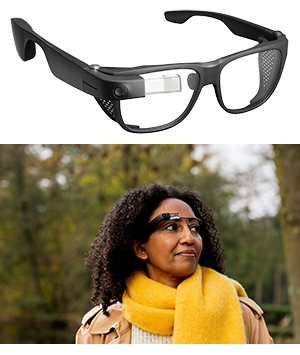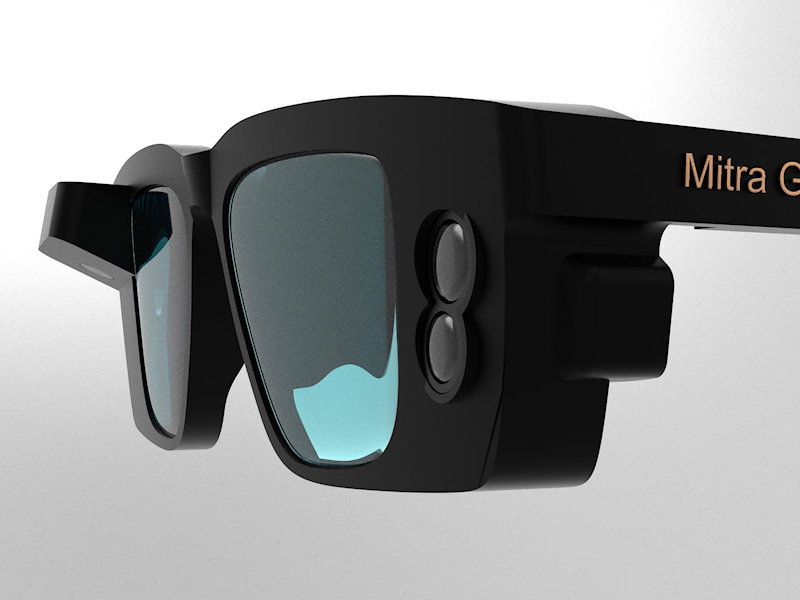Speech-to-Text Devices for Low Vision Users: Enhancing Communication and Productivity
Speech-to-Text Devices for Low Vision Users: Enhancing Communication and Productivity
Blog Article
Cutting-edge Solutions in Assistive Modern Technology for Visual Problems
The landscape of assistive innovation for aesthetic disability is evolving swiftly, offering a variety of innovative options that enhance accessibility and independence. From innovative smart device applications that facilitate navigation to wearable devices made for real-time support, these devices are reshaping the experiences of those with aesthetic impairments. The assimilation of smart home technologies and instructional sources has the prospective to foster better community interaction. Nonetheless, the ramifications of these improvements increase critical inquiries regarding their access and effectiveness in diverse contexts, calling for a better evaluation of their wider effect.
Innovations in Mobile Phone Applications
In recent times, advancements in smartphone applications have considerably transformed the landscape of assistive innovation for individuals with aesthetic impairments. These applications leverage the powerful sensing units and abilities of contemporary mobile phones to give customers with tools that enhance independence and accessibility in their day-to-days live.
Notable amongst these advancements are applications made for item acknowledgment, which utilize the smart device's electronic camera to determine items and supply verbal descriptions. Such attributes equip individuals to navigate their environments better, whether determining items in shops or locating individual valuables at home. In addition, text-to-speech applications have actually boosted considerably, allowing users to record printed text with their device's video camera and receive split second audio responses, consequently helping with analysis and comprehension.
Community-driven applications have fostered social interaction and source sharing amongst individuals with aesthetic problems, developing a supportive network that improves their high quality of life. Generally, smart device applications have actually become crucial allies in advertising autonomy and availability for individuals with aesthetic disabilities.
Wearable Tools for Navigating
Wearable tools for navigating have actually arised as a groundbreaking remedy for individuals with aesthetic impairments, providing hands-free help that boosts flexibility and orientation. These tools commonly make use of innovative modern technologies, including GPS, ultrasonic sensors, and synthetic intelligence, to supply real-time comments and instructions to customers as they navigate their atmosphere.
One significant example of wearable navigating modern technology is smart glasses, which can detect barriers and relay auditory or haptic responses to the wearer, allowing for reliable and safe activity in different setups. Various other gadgets, such as belts and vests geared up with sensors, can likewise inform customers of their surroundings by giving informs concerning neighboring things or changes in terrain.
In addition, lots of wearable devices incorporate with smartphone applications, allowing customers to customize their navigating preferences and obtain customized path suggestions. This customization can dramatically improve the user experience, empowering people to take a trip with greater confidence and self-reliance.
As technology remains to develop, the potential for wearable navigation gadgets to boost the quality of life for people with aesthetic problems continues to be considerable, leading the way for more comprehensive and available environments.
Smart Home Innovation Assimilation

Moreover, wise appliances outfitted with responsive interfaces or auditory feedback give instinctive communications that provide especially to the demands of those with visual problems. Clever refrigerators can announce their components and expiration days, while clever ovens can lead individuals through the food preparation procedure with audio instructions.
Home automation systems, such as clever doorbells and safety and security cameras, offer assurance by permitting users to get alerts and access live feeds by means of their smart phones, enhancing individual safety and security (AI-powered visual aids). Furthermore, assimilation with mobile phones and tablet computers ensures that users can handle their home environment from anywhere within their facilities
As smart home modern technology remains to advance, it holds the potential to change the living experiences of individuals with aesthetic problems, promoting independence and enhancing high quality of life in an increasingly connected world.

Educational Equipment and Resources
Accessibility to efficient academic devices and resources is index crucial for individuals with visual disabilities, as it empowers them to involve completely in their knowing experiences. Numerous assistive modern technologies have actually been developed to enhance access and foster independent discovering.
Moreover, academic software program especially designed for visually damaged users supplies features such as high-contrast settings and customizable text sizes. These devices suit diverse understanding styles and make sure that pupils can tailor their instructional experience to their requirements.
Additionally, accessibility to electronic collections and audio books increases the series of offered learning materials, enabling pupils to check out subjects extensive without the constraints enforced by conventional print sources. Collaborative systems that integrate ease of access functions also assist in group tasks, ensuring that aesthetically damaged trainees can contribute meaningfully along with their peers.
Neighborhood Assistance and Involvement
A robust network of area support and involvement is important for people with aesthetic problems, cultivating an inclusive environment where they can flourish. Area organizations, neighborhood advocacy teams, and volunteers play an essential role in offering sources, info, and friendship, which are vital for enhancing the lifestyle for those impacted by visual problems.
Engagement tasks such as workshops, get-togethers, and assistance teams not only help with ability advancement however likewise promote social interaction, reducing sensations of seclusion. These efforts encourage people to share successes, challenges, and experiences, therefore strengthening area bonds. Additionally, partnerships with neighborhood organizations can bring about better availability in public areas, further incorporating individuals with aesthetic disabilities into the community.
Modern technology likewise boosts area interaction through on-line systems that provide virtual assistance teams and resources, permitting people to link regardless of geographical obstacles. By taking advantage of both in-person and digital remedies, communities can develop a detailed assistance network. Eventually, cultivating collaboration among different stakeholders-- including families, teachers, and healthcare experts-- ensures that individuals with aesthetic problems get the holistic support essential to navigate every day life properly and with self-respect.
Verdict
Innovative remedies in assistive technology for visual problems significantly boost the quality of life for individuals dealing with these challenges. The combination of mobile phone applications, wearable gadgets, clever home innovation, and educational devices fosters higher self-reliance and availability. Community support and interaction additional equip visually damaged individuals, advertising inclusivity and participation in various elements of life. Jointly, these innovations not only transform day-to-day experiences yet likewise lead the way for a more fair culture.
The landscape of assistive innovation for aesthetic impairment is developing rapidly, presenting an array of ingenious solutions that boost availability and self-reliance. Community-driven applications have cultivated social interaction and resource sharing amongst individuals with aesthetic problems, producing a eye doctor years of school helpful network that get redirected here enhances their top quality of life. Generally, mobile phone applications have become indispensable allies in advertising autonomy and access for people with aesthetic problems.
Several people with aesthetic disabilities are finding higher autonomy with the combination of smart home modern technology.Ingenious services in assistive modern technology for visual disability dramatically improve the quality of life for people dealing with these challenges.
Report this page